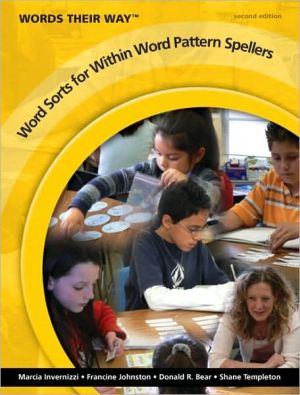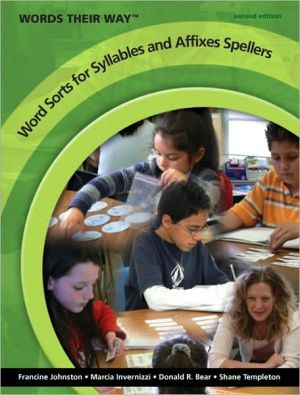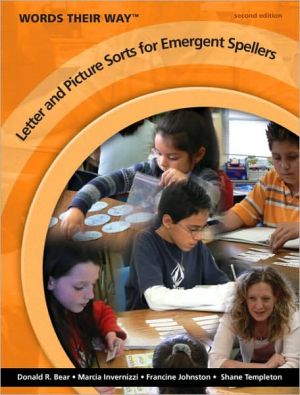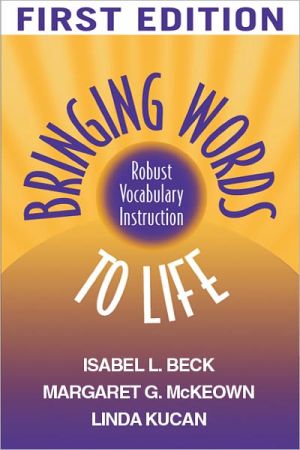Pronunciation Practice: A Resource Book for Teaching English Pronunciation
This is a resource book for teachers looking for ideas on how they can make pronunciation teaching more interesting. It contains a collection of pronunciation practice activities for a wide range of levels, using a variety of methods. Divided into two parts, the first part introduces information about phonetics and phonology as background to the teaching activities, without being overwhelming. It also highlights some of the current areas of debate and discussion in the teaching and learning...
Search in google:
Activities on topics ranging from sounds, syllables, stress and rhythm to voice quality and testing pronunciation with an accompanying audio CD.
Introduction Part 1. Background:A What is pronunciation?;B Key issues in pronunciation teaching and learning;Part 2.Activities:1 Developing awareness of English pronunciation:1.1 Introducing features of pronunciation,1.2 Getting you thinking: A pronunciation questionnaire,1.3 Making vowel sounds,1.4 Consonant clusters: English and L1 differences,1.5 Comparing slow and quick speech,1.6 Sounding English,1.7 Pronouncing names in English,1.8 Pronouncing places, products and planets,1.9 Impersonations,1.10 Intonation in print;2 Sounds: vowels, consonants and consonant clusters:A Vowels:2.1 Matching vowel sounds: A family tree,2.2 Finding words including the same vowel sound: Word routes,2.3 Hearing and saying differences between vowels and between consonants: Minimal pairs,2.4 Communicating with single vowel sounds,2.5 Classifying words according to their first vowel;B Consonants:2.6 Who lives where? Minimal pair names, 2.7 Lip-reading, 2.8 Classifying words according to their first consonant,2.9 Getting rid of unwanted vowels C Consonants clusters,2.10 Word chains, 2.11 Definitions quiz,2.12 Consonant cluster towers; 3 Connected speech:A Links between words: 3.1 Matching adjectives and nouns: consonant to vowel links,3.2 Changing sounds: consonant to consonant links,3.3 Predict the linking sounds: vowels linked with /j/ ('y') and /w/,3.4 Matching opposites and words that go together: vowels linked with /r/;B Contracted forms:3.5 Dialogues,3.6 Talking about families,3.7 Comparing speech and writing; C Weak and strong forms of grammar words,3.8 Comparing weak and strong forms,3.9 Predicting weak and strongforms,3.10 Listening to weak forms;D Leaving out sounds:3.11 Leaving out consonants: /t/ and /d/ in clusters,3.12 Leaving out vowels in words;4 Syllables, word stress, and stress in phrases:A Syllables:4.1 How many syllables?, 4.2 The same or different number of syllables?,4.3 Eliminating words;B Word stress:4.4 Demonstrating syllable length,4.5 Matching words with their stress patterns,4.6 Group the words,4.7 Country names,4.8 At the supermarket, 4.9 Stress patterns in '-ty' and '-teen' numbers (1): Bingo,4.10 Stress patterns in '-ty' and '-teen' numbers (2): Talking about accommodation,4.11 Stress in noun - verb pair,4.12 Rules of word stress in two-syllable nouns, adjectives and verbs;C Stress and word formation:4.13 Rules of word stress: prefixes and suffixes,4.14 Suffixes and word stress: words ending -ian, 4.15 Suffixes and word stress: words ending -ic and -ical,4.16 Stress in phrasal verbs and related nouns,4. 17 Rules of stress in compound nouns;D Stress in phrases:4.18 Same or different stress patterns?,4.19 Find your partners,4.20 Stress shift in nationality words, 4.21 Stress shift in compounds;5 Intonation A Prominence: highlighting words and syllables: 5.1 Introducing prominent and non-prominent words: James Bond,5.2 Hearing and saying prominent words: They're on the table,5.3 Prominence contrasts within words: stalactites and stalagmites; B Tone units and tonic placement:5.4 Dividing speech into tone units, 5.5 Tonic word placement: At ten to seven, or ten to eight?;C Tones:5.6 Choosing tones: Fall or rise?,5.7 Tone choice in questions,5.8 Falling and falling-rising tones: Reservation, 5.9 'News' and 'not news': correcting;6 Pronunciation and other parts of language: spelling, grammar and vocabulary:A Pronunciation and spelling:6.1 Grouping English alphabet letters,6.2 Pronouncing single vowel letters (1),6.3 Pronouncing single vowel letters (2),6.4 Pronouncing pairs of vowel letters: OU, OA, OE, OI, OO,6.5 Pronouncing consonant letters: C and G,6.6 Pronouncing consonant pairs: PH, CH, SH, and GH,6.7 Homographs: a row about rowing?;B Pronunciation and grammar:6.8 Pronouncing -s in plurals, verbs and possessives,6.9 Pronouncing -ed in past tense verbs:C Pronunciation and vocabulary,6.10 Classifying words,6.11 Odd one out, 6.12 Problem pronunciations;7 Testing pronunciation:7.1 General evaluation of pronunciation,7.








